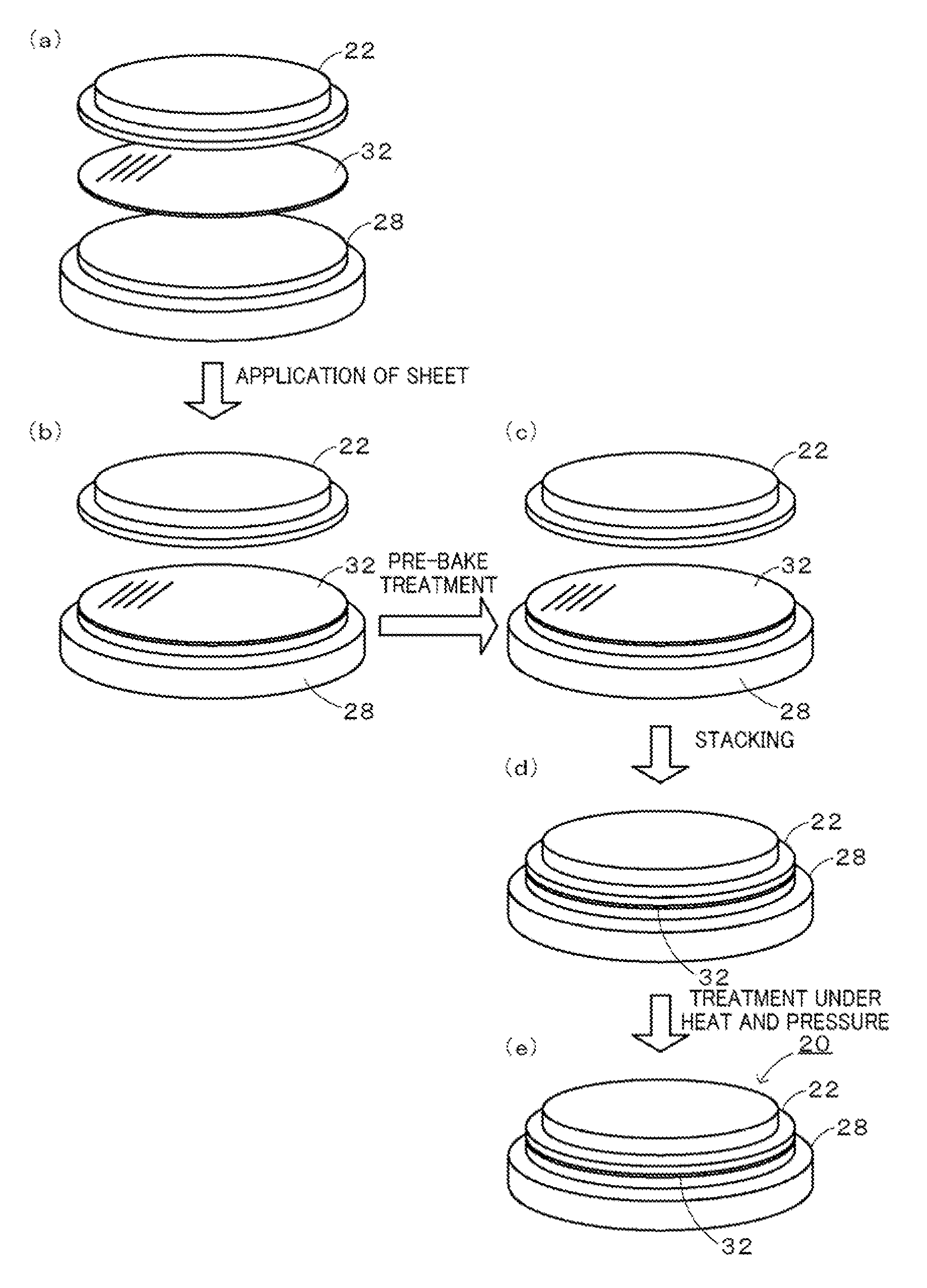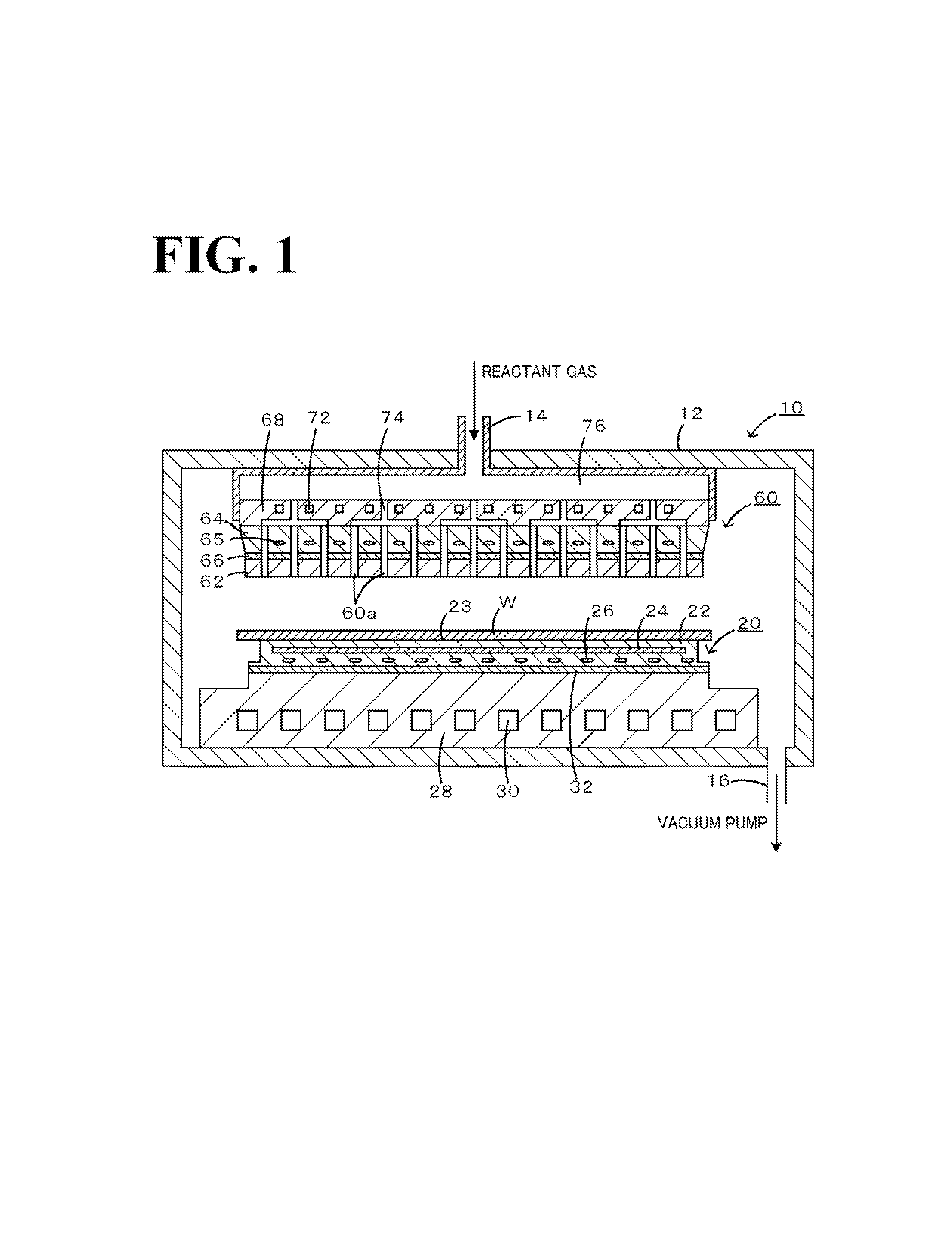Ceramic-metal bonded body and method of producing the same
a technology of ceramic metal and bonded body, which is applied in the direction of metal layered products, pipe joints, electrical equipment, etc., can solve the problems of reducing the temperature uniformity of a wafer subjected to suction, and affecting the quality of the produ
- Summary
- Abstract
- Description
- Claims
- Application Information
AI Technical Summary
Benefits of technology
Problems solved by technology
Method used
Image
Examples
example 1
[0054]An electrostatic chuck in which an alumina plate 22 having a diameter φ of 297 mm and a thickness of 3 mm is bonded to an aluminum (Al) cooling plate 28 having a diameter φ of 297 mm and a thickness of 18 mm with an acrylic resin bonding sheet 32 having a thickness of 0.15 mm was produced as an example of an electrostatic chuck 20. This electrostatic chuck 20 was produced in accordance with the first producion method described above. Specifically, a bonding sheet 66 was applied onto the Al cooling plate 28, and a pre-bake treatment was then conducted. In the pre-bake treatment, the temperature was increased at a rate of 32° C. / h in a special furnace in which the pressure was reduced to 10 Pa or less. When the temperature reached 120° C., the temperature was controlled to be constant and maintained at 120° C. for 20 hours. The temperature was then decreased at a rate of 4° C. / h. The cooling plate 28 to which the bonding sheet 66 was applied was then bonded to the plate 22. Spec...
example 2
[0058]A showerhead including a silicon carbide (SiC) plate 62 having a diameter φ of 430 mm and a thickness of 4 mm and a metal electrode plate 64 composed of aluminum (Al), having a tapered outer circumference with a diameter φ of one surface of 430 mm and a diameter φ of another surface of 450 mm, and having a thickness of 20 mm, the plate 62 and the metal electrode plate 64 being bonded to each other with a silicone resin bonding sheet 66 having a thickness of 0.25 mm therebetween, was produced as an example of a showerhead 60. Small holes 60a each had a diameter φ of 0.1 mm, and the distance between adjacent small holes 60a was 4 mm. This showerhead 60 was produced in accordance with the second producion method described above. Specifically, the bonding sheet 66 was applied onto the SiC plate 62, and a pre-hake treatment was then conducted. In the pre-bake treatment, the temperature of the plate 62 was increased at a rate of 10° C. / h in a special furnace in which the pressure wa...
PUM
| Property | Measurement | Unit |
|---|---|---|
| temperature | aaaaa | aaaaa |
| thickness | aaaaa | aaaaa |
| pressure | aaaaa | aaaaa |
Abstract
Description
Claims
Application Information
 Login to View More
Login to View More - R&D
- Intellectual Property
- Life Sciences
- Materials
- Tech Scout
- Unparalleled Data Quality
- Higher Quality Content
- 60% Fewer Hallucinations
Browse by: Latest US Patents, China's latest patents, Technical Efficacy Thesaurus, Application Domain, Technology Topic, Popular Technical Reports.
© 2025 PatSnap. All rights reserved.Legal|Privacy policy|Modern Slavery Act Transparency Statement|Sitemap|About US| Contact US: help@patsnap.com



